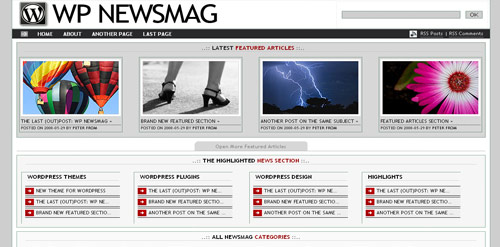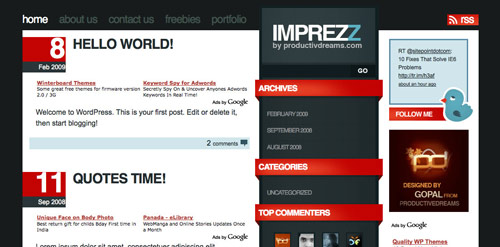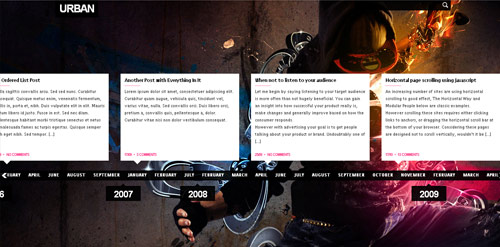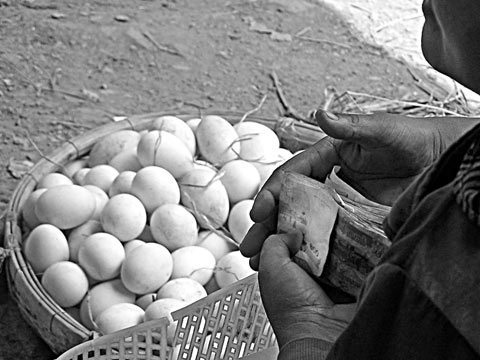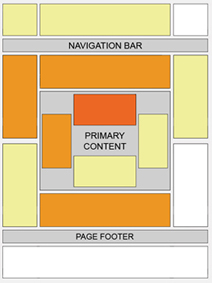The Australian food bloggers’ conference (which I’ve also written about over at SBS) seems to have had the effect of lighting a gigantic fire under the collective arses of Australia’s food bloggers. I feel like I’m back on the blogging bandwagon and have a decent reason to post again. The conference gave me real chance to assess why I do this.
My own focus has been away from Last Appetite over the past year, as you’ll probably notice from the volume of posts. This is not a mea culpa. I’m still writing, albeit 600 words a week for SBS. I chalked up my hundredth post for them a few weeks ago, which means that I’ve written the equivalent of a novel on SBS’ dime. Last Appetite fell by the wayside because I put most of my quality work elsewhere. I work hard at it and they pay me.
My focus has also changed over the last two years in Australia. Where in Cambodia, I’d wake up in the morning and point my camera at whatever happened to ride past my house, I’ve stopped doing so in Australia and this is to the detriment of writing blog posts. I’ve started to care more about the quality of my images instead of the value of a story even though I know that the words alone can carry it. This is because of a concern with how many people read my blog posts. Images sell food online and very few people want to read a thousand word post like this one. Those few people however, are the ones that I respect and want as readers; the people who are demanding, critical and taste the rising bile every time that they see a Donna Hay recipe book.
The weirdness of living back in the First World has started to wear off. I still get that strange sensation of disconnection in the supermarket and feel overwhelmed by the pointless choices but it doesn’t happen on every visit. I can even buy milk without reading the label of every variety and make choices using brand alone, like regular people must do. I spend much more of my time tending to my garden and cooking at home than interacting with the outside world. I began to think that my inner suburban pastoral life had no blog value in terms of cash or audience.
When I started blogging, I didn’t care if anyone read my work apart from a small group of people that I know in person. The idea that anything that I wrote had any monetary value was not a consideration that I made. Over the past two years, I got waylaid by making money with my blogs but have since realised that starting blogs or websites with low quality content in high value industries is much more lucrative than good writing about food. The fall of Gourmet magazine is testament to this.
As another example, this site which I own and use to test Google Ads is one page long, has virtually no content, but earns more than my few years of work at Phnomenon. If you click the ads, I’ll get somewhere in the vicinity of one to five dollars a click. Yes, it’s a travesty but a lucrative one. In a few years, I’ll be able to sell it for a few thousand dollars. I would not be able to make the same cold-hearted decision about a food blog that I’ve written because the sites are worth more to me than I could imagine a sane person paying.
For making money, quality content online is of little benefit. It’ll help you get a job providing content for someone else and be respected by your peers but won’t necessarily pull in a valuable enough audience to make advertising a viable option (yet). By viable, I mean making a minimum wage. Currently, the most valuable audiences online are those which are about to make a high value purchase online. This is why newspapers are spiralling the online drain – the valuable crowd is somewhere else.
So I’m going to stop giving a fuck about making money or building a larger audience on Last Appetite and get my focus back to where it once was: covering food stories in a way that nobody else writes about for the small group of people that I care about. I’m making good money elsewhere, online and in my day job, and my friends don’t want to see ads and don’t click them in any event.
Also, related to the conference, I’ve decided to go postal on any food bloggers accepting free shit from public relations folk.
I don’t mind if you attend press events or restaurant launches – the line between journalist and blogger has ceased to be meaningful and attending such events comes with the territory. But you don’t need to write about it. The bloggers whom I value most are the ones that set their own agenda.
As soon as you start talking about the awesomeness of the goodie bag or whore out your blog for a meal or an overpriced bottle of pomegranate extract, then when I link to you, you get a nofollow tag, forever. If you’re on my list of Australian food blogs, I’ll also mark that you have accepted cash or other incentives in exchange for comment in the past. If I wanted to read someone’s reworking of a press release, I’d buy a newspaper because at least that keeps a young journalist employed.



